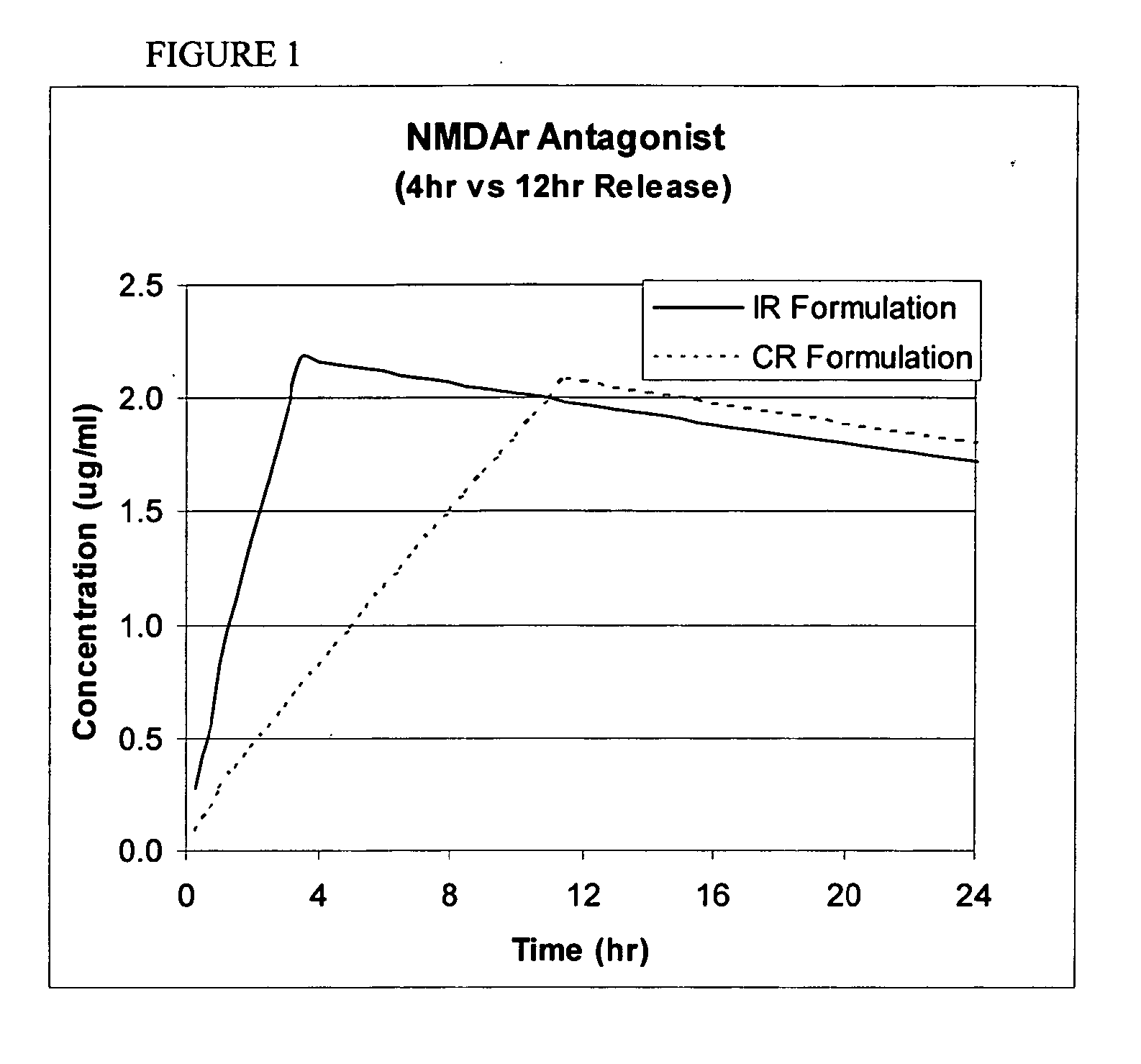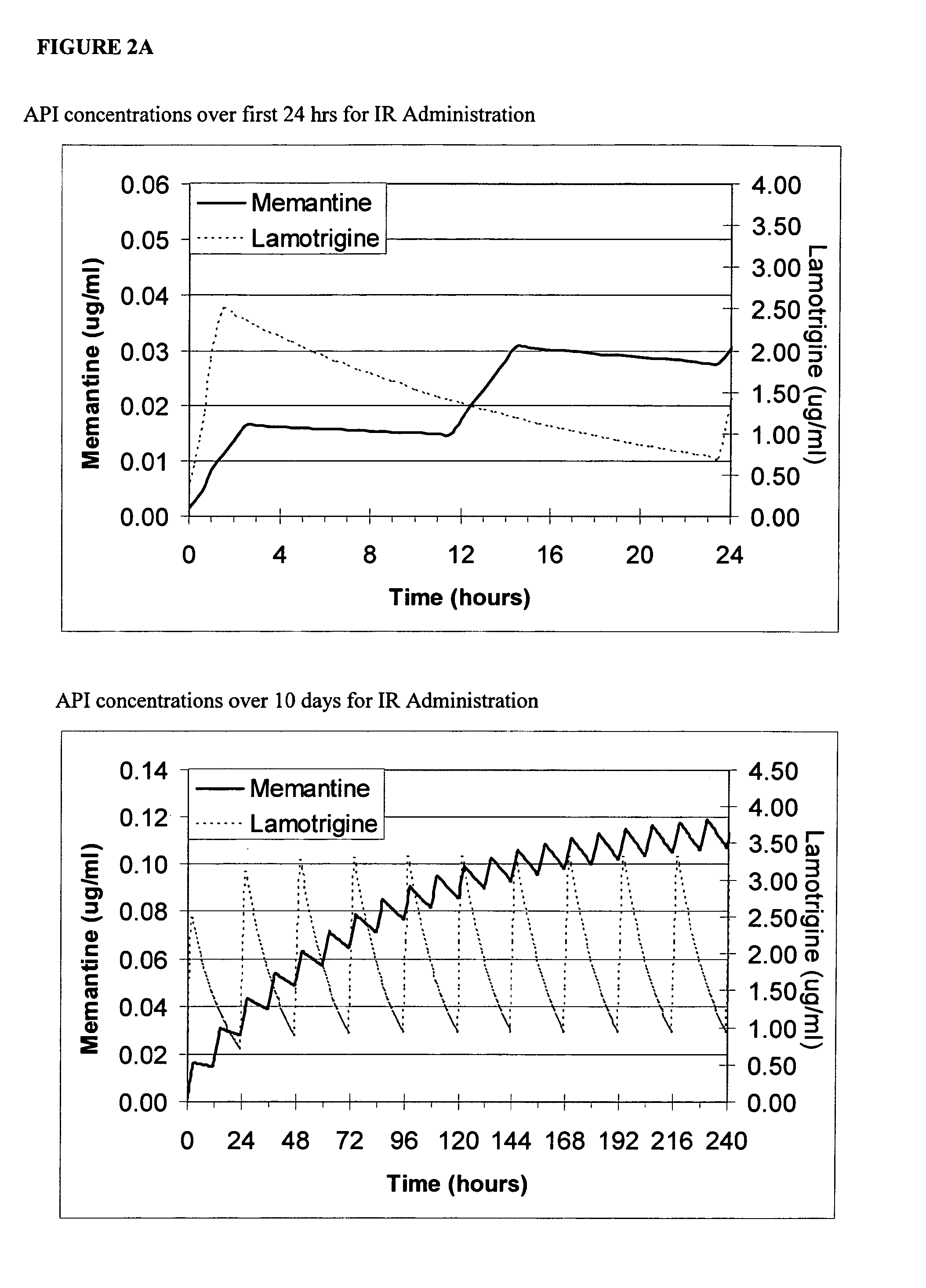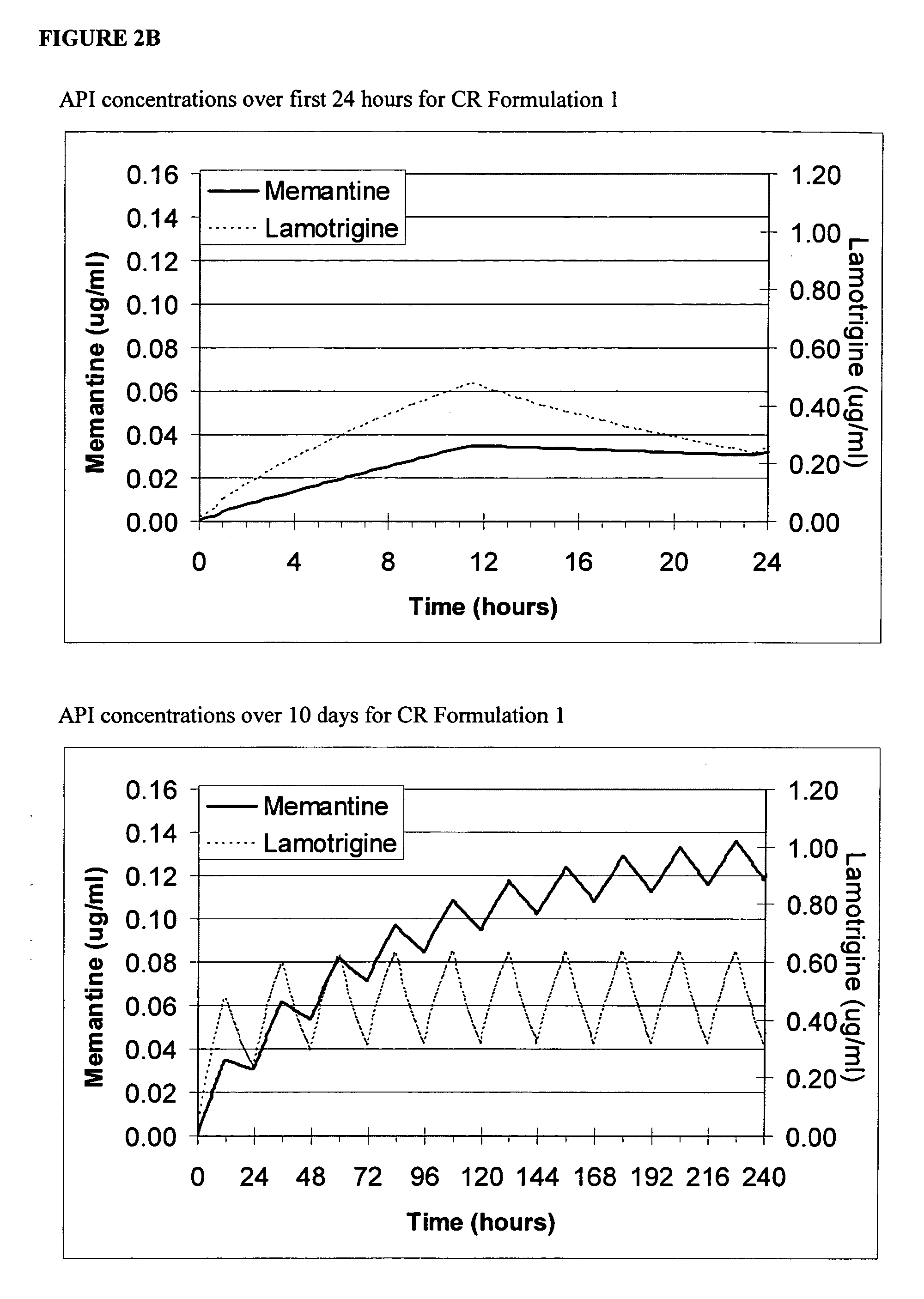Methods and compositions for the treatment of epilepsy, seizure disorders, and other CNS disorders
a technology for seizure disorders and compositions, applied in the field of compositions and methods for treating cnsrelated conditions, can solve the problems of limited treatment options, modest efficacy, severe debilitating side effects, etc., and achieve the effect of reducing the variability of the concentration ratio, reducing the side effects, and maximizing the therapeutic benefi
- Summary
- Abstract
- Description
- Claims
- Application Information
AI Technical Summary
Benefits of technology
Problems solved by technology
Method used
Image
Examples
example 1
In Vivo Method for Determining Optimal Steady-State Concentration Ratio (Cratio,ss)
[0085]A dose ranging study is performed in an appropriate seizure model (e.g., mouse electroshock model) with memantine to determine the ED50, which is approximately 12 μm. The ED50 for the AED (e.g., topiramate) is determined in a similar manner (approximately 5 μm). An isobolic experiment ensues where the drugs are combined in fractions of their EDXXs to add up to ED100 (i.e., ED50:ED50, ED25:ED75, etc.). The plot of the data is constructed. The experiment points that lie below the straight line between the ED50 points on the graph are indicative of synergy, points on the line are indicative of additive effects, and points above the line are indicative of inhibitory effects. The point of maximum deviation from the isobolic line is the optimal ratio. This is the optimal steady state ratio (Cratio,ss) and is adjusted based upon the component half-lives. Similar protocols may be applied in a wide varie...
example 2
Combinations of an NMDA Receptor Antagonist and an AED
[0086]Representative combination ranges and ratios are provided below for compositions of the invention. These ranges are based on the formulation strategies described herein.
Adult Dosage and Ratios for Combination TherapyAED Quantity, mg / day / (AED:NMDA Ratio Range)NMDA drugOxcarbazepine / Gabapentin / Lamotrigine / Topiramate / Valproate / Zonisamide / Vigabatrin / mg / dayTRILEPTAL ™NEURONTIN ™LAMICTAL ™TOPAMAX ™DEPAKOTE ™ZONAGRAN ™SABRIL ™Memantine / 2.5-80100-1600100-320025-20050-400250-200050-400750-3000(1.2-640) (1.2-1280)(0.3-80) (0.6-160) (3-800)(0.6-160) (9.3-1200)Amantadine / 50-300100-1600100-320025-20050-400250-200050-400750-3000(0.3-32) (0.3-64) (0.08-4) (0.16-8) (0.8-40) (0.16-8) (2.5-60) Rimantadine / 50-200100-1600100-320025-20050-400250-200050-400750-3000(0.5-32) (0.5-64) (0.1-4) (0.2-8) (1-40)(0.2-8) (3.7-60)
example 3
Release Profile of Memantine and Zonisamide
[0087]Release proportions are shown in the tables below for a combination of memantine and topiramate. The cumulative fraction is the amount of drug substance released from the formulation matrix to the serum or gut environment (e.g., U.S. Pat. No. 4,839,177).
MEMANTINE T½ = 60 hrsZONISAMIDE T½ = 60 hrsTimecum. fraction Acum. fraction B10.20.220.30.340.40.480.50.5120.60.6160.70.7200.80.8240.90.9
PUM
| Property | Measurement | Unit |
|---|---|---|
| thickness | aaaaa | aaaaa |
| temperature | aaaaa | aaaaa |
| pharmaceutical composition | aaaaa | aaaaa |
Abstract
Description
Claims
Application Information
 Login to View More
Login to View More - R&D
- Intellectual Property
- Life Sciences
- Materials
- Tech Scout
- Unparalleled Data Quality
- Higher Quality Content
- 60% Fewer Hallucinations
Browse by: Latest US Patents, China's latest patents, Technical Efficacy Thesaurus, Application Domain, Technology Topic, Popular Technical Reports.
© 2025 PatSnap. All rights reserved.Legal|Privacy policy|Modern Slavery Act Transparency Statement|Sitemap|About US| Contact US: help@patsnap.com



